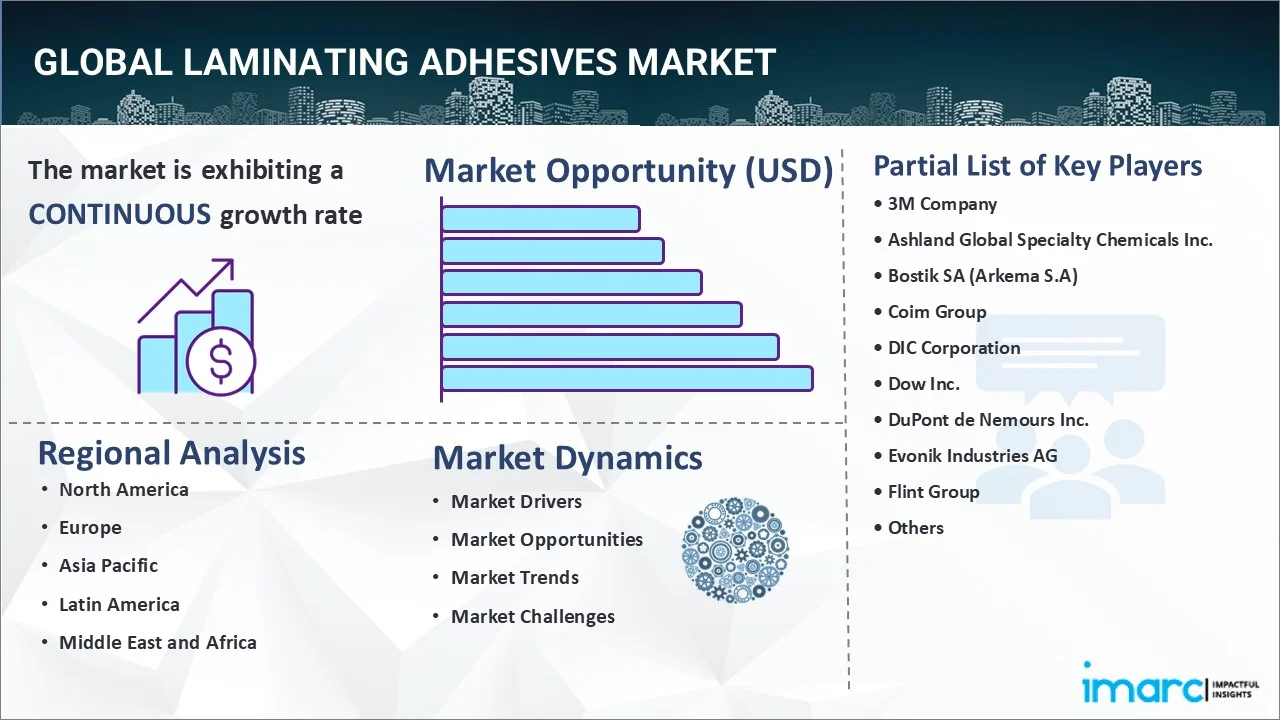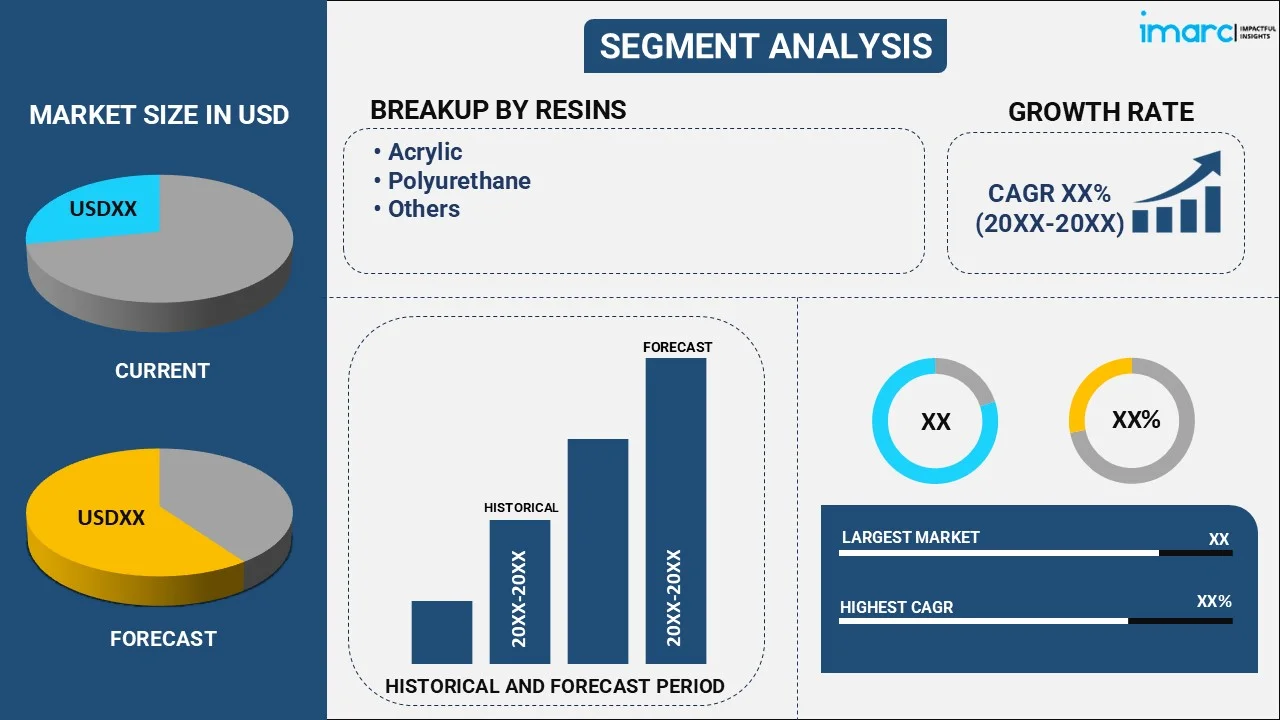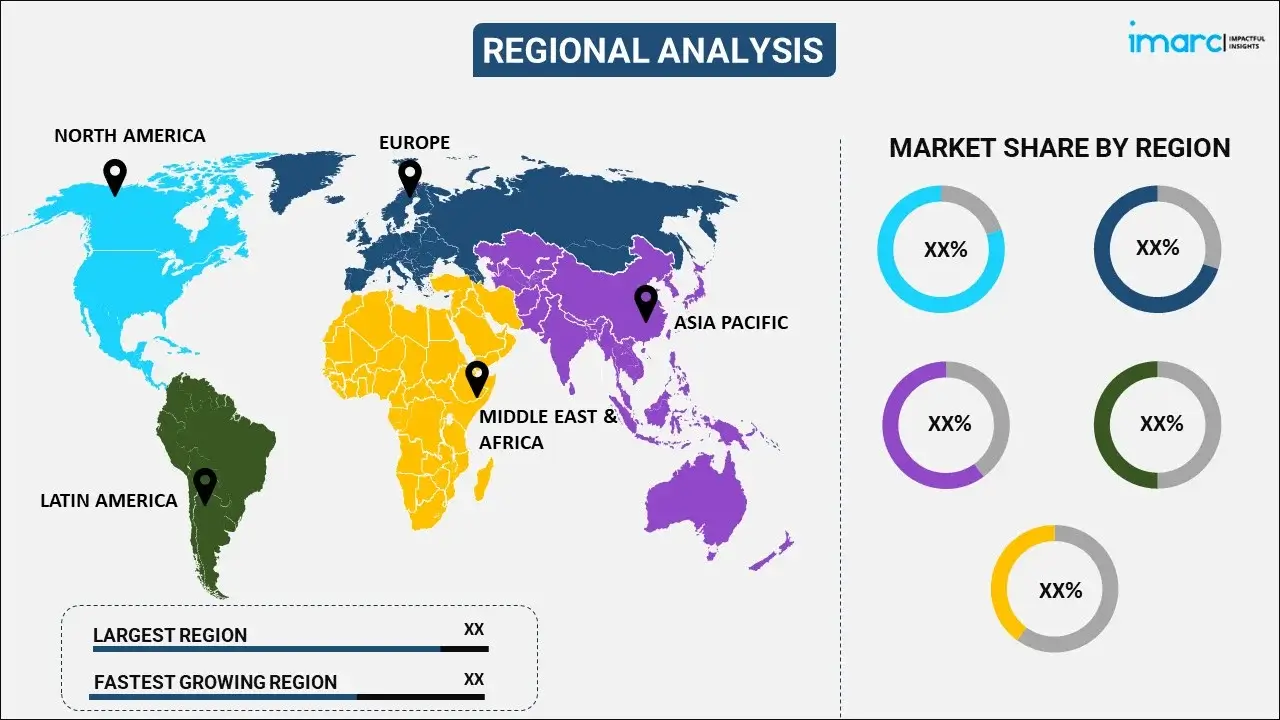
Laminating Adhesives Market Report by Resin (Acrylic, Polyurethane, and Others), Technology (Solvent-based, Water-based, and Others), Application (Packaging, Automotive and Transportation, and Others), and Region 2025-2033
Market Overview:
The global laminating adhesives market size reached USD 3.4 Billion in 2024. Looking forward, IMARC Group expects the market to reach USD 5.9 Billion by 2033, exhibiting a growth rate (CAGR) of 6.05% during 2025-2033. The growth of packaging and automotive industries, advancements in electronics, sustainability concerns, and the expanding consumer demand for convenience and appealing packaging solutions are some of the major factors propelling the market.
|
Report Attribute
|
Key Statistics
|
|---|---|
|
Base Year
|
2024 |
|
Forecast Years
|
2025-2033
|
|
Historical Years
|
2019-2024
|
| Market Size in 2024 | USD 3.4 Billion |
| Market Forecast in 2033 | USD 5.9 Billion |
| Market Growth Rate (2025-2033) | 6.05% |
Laminating adhesives are specialized adhesive materials used in various industries, primarily for bonding multiple layers of substrates together to create a composite structure. These adhesives are designed to provide a strong, durable, and often transparent bond between different materials such as films, foils, paper, and fabrics. Laminating adhesives are commonly employed in applications like packaging, labels, graphic arts, and flexible electronics. They play a crucial role in enhancing the structural integrity, appearance, and functional properties of laminated products. The continuous innovation and development in laminating adhesive technology ensure that they meet specific performance requirements, making them essential components in modern manufacturing processes.

The packaging industry's expansion, driven by increased demand for convenience and sustainable packaging solutions, has spurred the use of laminating adhesives in flexible packaging materials, labels, and pouches, primarily driving its global market. In addition to this, the automotive sector's growth, coupled with the rising trend of lightweighting to improve fuel efficiency, has boosted the demand for laminating adhesives in interior trim and structural components, creating a favorable outlook for market expansion. Moreover, the electronics industry's rapid advancements, particularly in flexible and printed electronics, have produced a substantial need for laminating adhesives in manufacturing flexible displays, solar panels, and wearable devices, thereby bolstering the market growth. Furthermore, the ongoing focus on environmental sustainability has pushed manufacturers to develop eco-friendly laminating adhesives, catering to the growing preference for green and recyclable packaging materials, aiding in market expansion.
Laminating Adhesives Market Trends/Drivers:
Expansion of the packaging industry
The packaging industry's growth is a primary driver of the laminating adhesives market. This expansion is fueled by the increasing demand for convenient and sustainable packaging solutions. Laminating adhesives are essential in creating flexible packaging materials, labels, and pouches. These materials offer benefits such as improved product protection, extended shelf life, and enhanced visual appeal. Concurrent with this, laminating adhesives combine different substrates, allowing manufacturers to design packaging materials that cater to specific product requirements, thus presenting lucrative market opportunities. The demand for laminating adhesives in the packaging sector is further accentuated by trends such as single-serve packaging, e-commerce, and the need for lightweight, space-efficient packaging materials.
Growth in the automotive industry
The flourishing expansion of the automotive sector is acting as another significant growth-inducing driver for laminating adhesives. As the industry strives to improve fuel efficiency and reduce emissions, there is a growing emphasis on lightweight vehicles. Laminating adhesives play a pivotal role in this endeavor by enabling the bonding of dissimilar materials like metals, plastics, and composites. This reduces the weight of automotive components and enhances structural integrity. Laminated materials find applications in interior trim, sound insulation, and even structural components like body panels and battery enclosures in electric vehicles. The increasing adoption of laminating adhesives in the automotive sector is expected to continue as automakers prioritize fuel efficiency and sustainability.
Advancements in electronics
The rapid evolution of the electronics industry, particularly in flexible and printed electronics, is a crucial driver of the laminating adhesives market. These adhesives are indispensable in manufacturing flexible displays, printed circuit boards (PCBs), solar panels, and wearable devices. As consumer electronics become smaller, thinner, and more flexible, the demand for laminating adhesives that can provide strong and reliable bonds while allowing flexibility and durability has surged. Furthermore, laminating adhesives facilitate the production of high-resolution displays, touchscreens, and flexible PCBs used in smartphones, tablets, and various smart devices. With the continuous development of innovative electronic applications, the demand for specialized laminating adhesives is expected to grow steadily.
Laminating Adhesives Industry Segmentation:
IMARC Group provides an analysis of the key trends in each segment of the global laminating adhesives market report, along with forecasts at the global, regional, and country levels for 2025-2033. Our report has categorized the market based on resin, technology, and application.
Breakup by Resin:

- Acrylic
- Polyurethane
- Others
Polyurethane dominates the market
The report has provided a detailed breakup and analysis of the market based on the resin. This includes acrylic, polyurethane, and others. According to the report, polyurethane represented the largest segment.
Polyurethane adhesives are highly sought after due to their exceptional flexibility, durability, and resistance to environmental factors. In the automotive sector, these adhesives are increasingly used for laminating interior trim components, where their flexibility and ability to bond various materials are crucial. Additionally, the construction industry has seen a surge in demand for polyurethane laminating adhesives, particularly in assembling sandwich panels and composite structures, as they offer outstanding adhesion to substrates like metal and wood, strengthening the market growth. Moreover, the wind energy sector is driving demand for polyurethane adhesives in fabricating wind turbine blades, where their superior bonding strength and resistance to harsh weather conditions are essential. These specialized attributes of polyurethane laminating adhesives cater to specific industry needs and contribute to their increasing prominence in various sectors.
Breakup by Technology:
- Solvent-based
- Water-based
- Others
Solvent-based holds the largest share in the market
A detailed breakup and analysis of the market based on the technology has also been provided in the report. This includes solvent-based, water-based, and others. According to the report, solvent-based accounted for the largest market share.
Solvent-based adhesives offer fast curing times, making them particularly advantageous in high-speed production processes such as flexible packaging and labeling, thereby boosting their adoption. Besides this, their ability to provide strong and durable bonds on an array of substrates, including plastics, foils, and papers, is fueling their demand across industries where combining different materials is common. Additionally, solvent-based adhesives exhibit excellent heat and chemical resistance, making them befit for applications such as food packaging, where products may require sterilization or exposure to various chemicals, aiding in market expansion. Apart from this, the expanding preference for solvent-based laminating adhesives in specific industries where their unique performance attributes meet critical production needs ensures their continued demand in these niche applications, contributing to the market's growth.
Breakup by Application:
- Packaging
- Automotive and Transportation
- Others
Packaging dominates the market
The report has provided a detailed breakup and analysis of the market based on the application. This includes packaging, automotive and transportation, and others. According to the report, packaging represented the largest segment.
One of the key drivers impelling the growth is the increasing consumer preference for convenient and visually appealing packaging solutions. Laminating adhesives enable the creation of multilayered packaging materials that offer enhanced product protection, extended shelf life, and improved aesthetic appeal. Furthermore, as e-commerce continues to thrive, the need for robust and durable packaging materials has surged, further boosting the demand for laminating adhesives. In line with this, the growing awareness of sustainability and eco-friendly packaging options has also contributed to this demand, as manufacturers develop laminating adhesives that adhere to environmental standards. Moreover, the requirement for lightweight packaging materials in response to transportation cost-efficiency and reduced environmental impact has led to the adoption of laminated substrates, further underlining the significance of laminating adhesives in the packaging sector.
Breakup by Region:

- North America
- United States
- Canada
- Asia-Pacific
- China
- Japan
- India
- South Korea
- Australia
- Indonesia
- Others
- Europe
- Germany
- France
- United Kingdom
- Italy
- Spain
- Russia
- Others
- Latin America
- Brazil
- Mexico
- Others
- Middle East and Africa
Asia Pacific exhibits a clear dominance, accounting for the largest laminating adhesives market share
The market research report has also provided a comprehensive analysis of all the major regional markets, which include North America (the United States and Canada); Asia Pacific (China, Japan, India, South Korea, Australia, Indonesia, and others); Europe (Germany, France, the United Kingdom, Italy, Spain, Russia, and others); Latin America (Brazil, Mexico, and others); and the Middle East and Africa. According to the report, Asia Pacific accounted for the largest market share.
The rapid urbanization and a burgeoning middle-class population in the Asia Pacific, particularly in countries such as China and India, have led to enhanced consumerism and, subsequently, higher demand for packaged goods. This demand for diverse packaging solutions has driven the adoption of laminating adhesives in the region, especially in flexible packaging and label applications. Moreover, the thriving electronics industry in the Asia Pacific, including the production of smartphones, consumer electronics, and semiconductor devices, has significantly contributed to the demand for laminating adhesives used in the assembly of electronic components and flexible displays. Apart from this, the region's focus on infrastructure development, including construction and automotive sectors, has led to the increased use of laminating adhesives in applications such as bonding interior trim in vehicles and laminating materials for architectural panels. These factors, combined with the region's economic growth and industrial expansion, continue to propel the Asia Pacific laminating adhesives market.
Competitive Landscape:
The global laminating adhesives market exhibits a competitive landscape characterized by the presence of several prominent players vying for market share. Key industry participants leverage their extensive research and development capabilities to innovate and introduce advanced laminating adhesive products that cater to diverse industry needs, emphasizing attributes such as sustainability, ease of use, and performance. Additionally, strategic acquisitions and collaborations to expand product portfolios and geographical presence are common strategies in this market. With sustainability becoming a paramount concern, many players are investing in the development of eco-friendly laminating adhesives, aligning with global environmental regulations and market trends. Overall, the global laminating adhesives market is competitive, driven by innovation, product differentiation, and a constant pursuit of meeting evolving industry requirements.
The report has provided a comprehensive analysis of the competitive landscape in the market. Detailed profiles of all major companies have also been provided. Some of the key players in the market include:
- 3M Company
- Ashland Global Specialty Chemicals Inc.
- Bostik SA (Arkema S.A)
- Coim Group
- DIC Corporation
- Dow Inc.
- DuPont de Nemours Inc.
- Evonik Industries AG
- Flint Group
- H.B. Fuller Company
- Henkel AG & Co. KGaA
- L.D. Davis Industries Inc.
- Sika AG
- Vimasco Corporation
Recent Developments:
- In April 2023, Bostik, a division of the French multinational chemical corporation Arkema, launched HERBERTS LF686/H186, an innovative solvent-free laminating adhesive tailored for the pharmaceutical sector.
- In December 2022, Dow, a multinational chemical corporation headquartered in the United States, obtained RecyClass approval for the mechanical recycling of its MOR-FREE L 75-300/ CR88-300 and ROBOND L-350/ CR-3 laminating adhesives.
- In November 2022, Henkel AG announced a strategic partnership with Cyclos-HTP Institute (CHI) to gain access to in-house testing and certification, and joint material science R&D.
Laminating Adhesives Market Report Scope:
| Report Features | Details |
|---|---|
| Base Year of the Analysis | 2024 |
| Historical Period | 2019-2024 |
| Forecast Period | 2025-2033 |
| Units | Billion USD |
| Scope of the Report | Exploration of Historical Trends and Market Outlook, Industry Catalysts and Challenges, Segment-Wise Historical and Predictive Market Assessment:
|
| Resins Covered | Acrylic, Polyurethane, Others |
| Technologies Covered | Solvent-based, Water-based, Others |
| Applications Covered | Packaging, Automotive and Transportation, Others |
| Regions Covered | Asia Pacific, Europe, North America, Latin America, Middle East and Africa |
| Countries Covered | United States, Canada, Germany, France, United Kingdom, Italy, Spain, Russia, China, Japan, India, South Korea, Australia, Indonesia, Brazil, Mexico |
| Companies Covered | 3M Company, Ashland Global Specialty Chemicals Inc., Bostik SA (Arkema S.A), Coim Group, DIC Corporation, Dow Inc., DuPont de Nemours Inc., Evonik Industries AG, Flint Group, H.B. Fuller Company, Henkel AG & Co. KGaA, L.D. Davis Industries Inc., Sika AG, Vimasco Corporation, etc. |
| Customization Scope | 10% Free Customization |
| Post-Sale Analyst Support | 10-12 Weeks |
| Delivery Format | PDF and Excel through Email (We can also provide the editable version of the report in PPT/Word format on special request) |
Key Benefits for Stakeholders:
- IMARC’s industry report offers a comprehensive quantitative analysis of various market segments, historical and current market trends, market forecasts, and dynamics of the laminating adhesives market from 2019-2033.
- The research report provides the latest information on the market drivers, challenges, and opportunities in the global laminating adhesives market.
- The study maps the leading, as well as the fastest-growing, regional markets. It further enables stakeholders to identify the key country-level markets within each region.
- Porter's five forces analysis assist stakeholders in assessing the impact of new entrants, competitive rivalry, supplier power, buyer power, and the threat of substitution. It helps stakeholders to analyze the level of competition within the laminating adhesives industry and its attractiveness.
- Competitive landscape allows stakeholders to understand their competitive environment and provides an insight into the current positions of key players in the market.
Key Questions Answered in This Report
The global laminating adhesives market was valued at USD 3.4 Billion in 2024.
We expect the global laminating adhesives market to exhibit a CAGR of 6.05% during 2025-2033.
The rising utilization of laminating adhesives across various industries, automotive, transportation, manufacturing, etc., as they exhibit high chemical and heat resistance, mechanical performance, transparency, wettability, bond strength, etc., is primarily driving the global laminating adhesives market.
The sudden outbreak of the COVID-19 pandemic had led to the implementation of stringent lockdown regulations across several nations, resulting in the temporary halt in numerous production activities for laminating adhesives.
Based on the resin, the global laminating adhesives market can be segmented into acrylic, polyurethane, and others. Currently, polyurethane holds the largest market share.
Based on the technology, the global laminating adhesives market has been divided into solvent-based, water-based, and others. Among these, solvent-based currently exhibits a clear dominance in the market.
Based on the application, the global laminating adhesives market can be categorized into packaging, automotive and transportation, and others. Currently, packaging accounts for the majority of the global market share.
On a regional level, the market has been classified into North America, Asia-Pacific, Europe, Latin America, and Middle East and Africa, where Asia-Pacific currently dominates the global market.
Some of the major players in the global laminating adhesives market include 3M Company, Ashland Global Specialty Chemicals Inc., Bostik SA (Arkema S.A), Coim Group, DIC Corporation, Dow Inc., DuPont de Nemours Inc., Evonik Industries AG, Flint Group, H.B. Fuller Company, Henkel AG & Co. KGaA, L.D. Davis Industries Inc., Sika AG, and Vimasco Corporation.
Need more help?
- Speak to our experienced analysts for insights on the current market scenarios.
- Include additional segments and countries to customize the report as per your requirement.
- Gain an unparalleled competitive advantage in your domain by understanding how to utilize the report and positively impacting your operations and revenue.
- For further assistance, please connect with our analysts.
 Inquire Before Buying
Inquire Before Buying
 Speak to an Analyst
Speak to an Analyst
 Request Brochure
Request Brochure
 Request Customization
Request Customization




.webp)




.webp)












